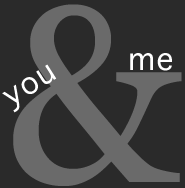This is a question I hear frequently from personal historians and others who are writing non-fiction books that will either be privately published or self-published and marketed. [For the purposes of this discussion, let’s consider design all the things that happen in between finishing a manuscript and delivering the digital files to the printer.] The usual thinking is that they don’t want to “lose money”.
Other reasoning includes: I’ve already got Word so I can combine pictures and text to layout the pages. How hard can it be, anyway? Or, the printer said they will throw in the design for free.
There certainly are times when it makes sense to do the design work yourself. Perhaps you really have no budget for design. [Perhaps because you forgot to factor it in?] I think Word is really difficult to use for page layout so, if you are not going to invest in a professional level page layout program, then I suggest using a service such as blurb.com or Memory Press. They have professionally designed templates so you can’t go too far wrong. If you do use Word, keep it simple. You won’t have all the typographic and design controls, but that is no excuse for bad design. Find a book you like and figure out the specifications its designer set up.
Perhaps you are really drawn to the idea of doing your own design. You pay attention to how other books are designed. You read type sample books as if they were novels. And while you aren’t yet very proficient at it, you know in your heart there’s a book designer inside you just waiting to be released and that you will be in hog-heaven as you develop your skills. In this case, invest in Adobe InDesign or QuarkXPress and take the time to learn how to use them well. I find lynda.com an excellent resource for software tutorials. Adobe’s website is rich with tutorials and other learning resources. Recognize too, that learning a page layout program is only the technical side of the equation. But you already know that, don’t you?
But if you are a writer trying to build a profitable business, particularly as a professional historian, there are some good reasons to consider subcontracting the design work. First, you should not lose money. Worst case, you simply pass along the designer’s fee to your client. And as a general practice you would mark-up that fee to account for the time you spend coordinating with the subcontractor and for having the good judgment to choose them in the first place.
Developing an ongoing relationship with one or more designers will pay dividends over time as you learn how to work together efficiently, learn from previous projects how to better estimate time and costs and how to manage the workflow. And, when you are not bogged down trying to figure out how to get nicely justified columns of text, you can be filling up your marketing pipeline, starting your next project, or enjoying some well-deserved time off.
Related posts you might like:
reading a book like a designer
And don’t just take my word for it. Check out Dan Curtis’s4 Reasons Why You Need to Hire a Book Designer











2 Trackbacks
[…] why not design the book yourself? […]
[…] why not design the book yourself? […]